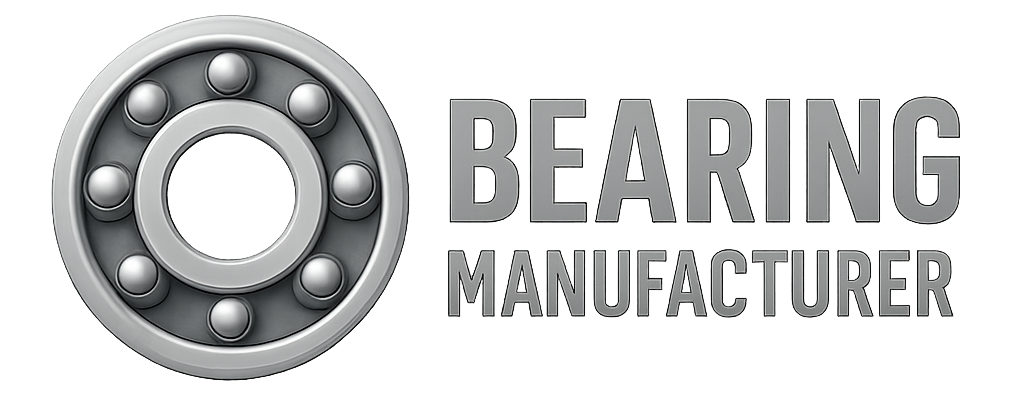Motor bearing sizing plays a crucial role in motor performance, efficiency, and longevity. Selecting the right bearing prevents premature wear, reduces maintenance costs, and minimizes the risk of motor failure.
Before determining the correct bearing size, engineers must understand the operational loads — particularly radial load — and assess the bearing’s capacity to handle these forces over the intended lifespan.
This guide explains what radial load is, how to calculate it, why it matters in motor bearing sizing, and how to choose bearings that meet your operational needs.
What Is Radial Load?
Radial load is the force acting perpendicular to the motor shaft. It results from the interaction between the shaft and components such as gears, belts, and pulleys.
These forces, combined with external influences and internal assembly factors, determine the total load experienced by motor bearings.
Radial Load Distribution in Motor Bearings
A motor shaft system can be modeled as a beam supported by two bearings. The total radial load is shared between these bearings, with the distribution depending on the location of applied forces.
For example, in a two-bearing shaft system:
FrA=(a+b)FIb+dFIIc+dFr_A = \frac{(a+b)F_I}{b} + \frac{dF_{II}}{c+d} FrB=−aFIb+cFIIc+dFr_B = -\frac{aF_I}{b} + \frac{cF_{II}}{c+d}
Where:
-
FrA, FrB = radial loads on bearings A and B (N)
-
FI, FII = applied radial forces on the shaft
-
a, b, c, d = distances between load points and bearings
While this is a simplified case, real-world applications may require advanced load modeling.
The Lever Balance Effect
The distance from the gearhead output shaft’s end to the load application point significantly affects permissible radial load.
-
Shorter distance to support bearing → higher permissible radial load.
-
Longer distance → increased shaft bending and reduced load capacity.
Designers can optimize bearing load capacity by positioning heavy loads closer to internal support bearings.
Calculating Static Radial Loads
Static radial loads are constant forces acting on the shaft, typically from:
-
Rotor weight – calculated from rotor mass and its distribution along the shaft.
-
External equipment – weight of pulleys, gears, or couplings.
-
Assembly preload – intentional bearing preload to remove clearance.
Total Static Load=Rotor Weight Load+External Forces Load+Assembly Preload\text{Total Static Load} = \text{Rotor Weight Load} + \text{External Forces Load} + \text{Assembly Preload}
Calculating Dynamic Radial Loads
Dynamic radial loads vary during operation and can be caused by:
-
Rotor imbalance
F=mω2eF = m\omega^2e
Where m = rotor mass, ω = angular speed (rad/s), e = eccentricity.
-
Varying external loads – e.g., reciprocating pumps or conveyors.
-
Shaft misalignment – measurable with laser alignment tools.
-
Thermal expansion
ΔL=L×α×ΔT\Delta L = L \times \alpha \times \Delta T
-
Vibration and resonance – measured using vibration analysis equipment.
Total Dynamic Load=Imbalance Force+External Load Variation+Misalignment Force+Thermal Expansion Force+Vibration Force\text{Total Dynamic Load} = \text{Imbalance Force} + \text{External Load Variation} + \text{Misalignment Force} + \text{Thermal Expansion Force} + \text{Vibration Force}
Motor Bearing Sizing Based on Radial Load
Once total radial load is known:
-
Match load to bearing ratings
Compare calculated load with manufacturer’s dynamic and static load ratings. -
Consider operational speed
High-speed applications require bearings designed for low friction and minimal heat generation. -
Check L10 life
L10=(CP)3for ball bearingsL_{10} = \left(\frac{C}{P}\right)^3 \quad \text{for ball bearings} L10=(CP)10/3for roller bearingsL_{10} = \left(\frac{C}{P}\right)^{10/3} \quad \text{for roller bearings}
Where C = dynamic load rating, P = equivalent dynamic load.
-
Account for environmental conditions
Use sealed or shielded bearings in dusty or wet environments. Select lubricants suitable for the operating temperature range.
Conclusion
Understanding radial load is essential for accurate motor bearing sizing. Correct calculation and application ensure that bearings can handle operational stresses, leading to improved reliability, longer service life, and lower maintenance costs.
Manufacturers like Bearing Maker offer a wide range of high-performance motor bearings, along with engineering support to help match the right product to your specific speed, load, and environmental requirements.
